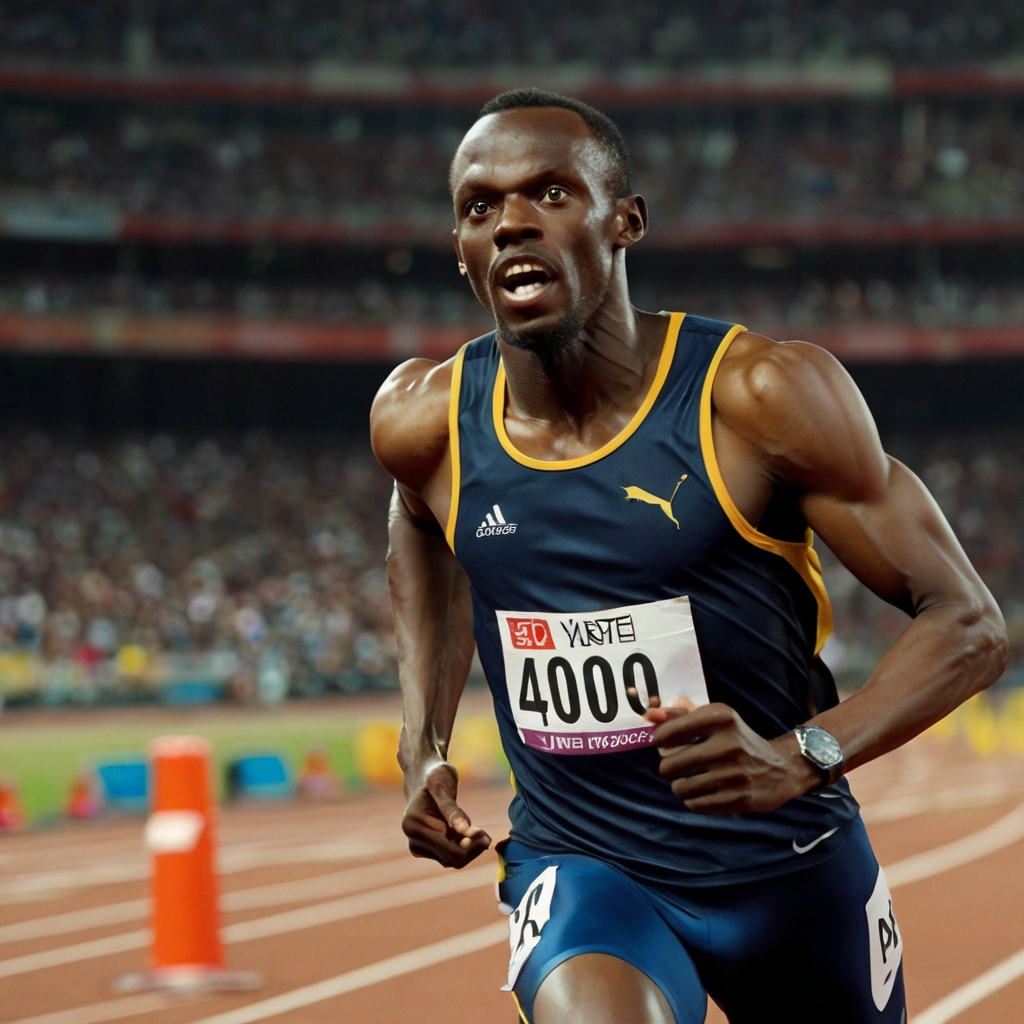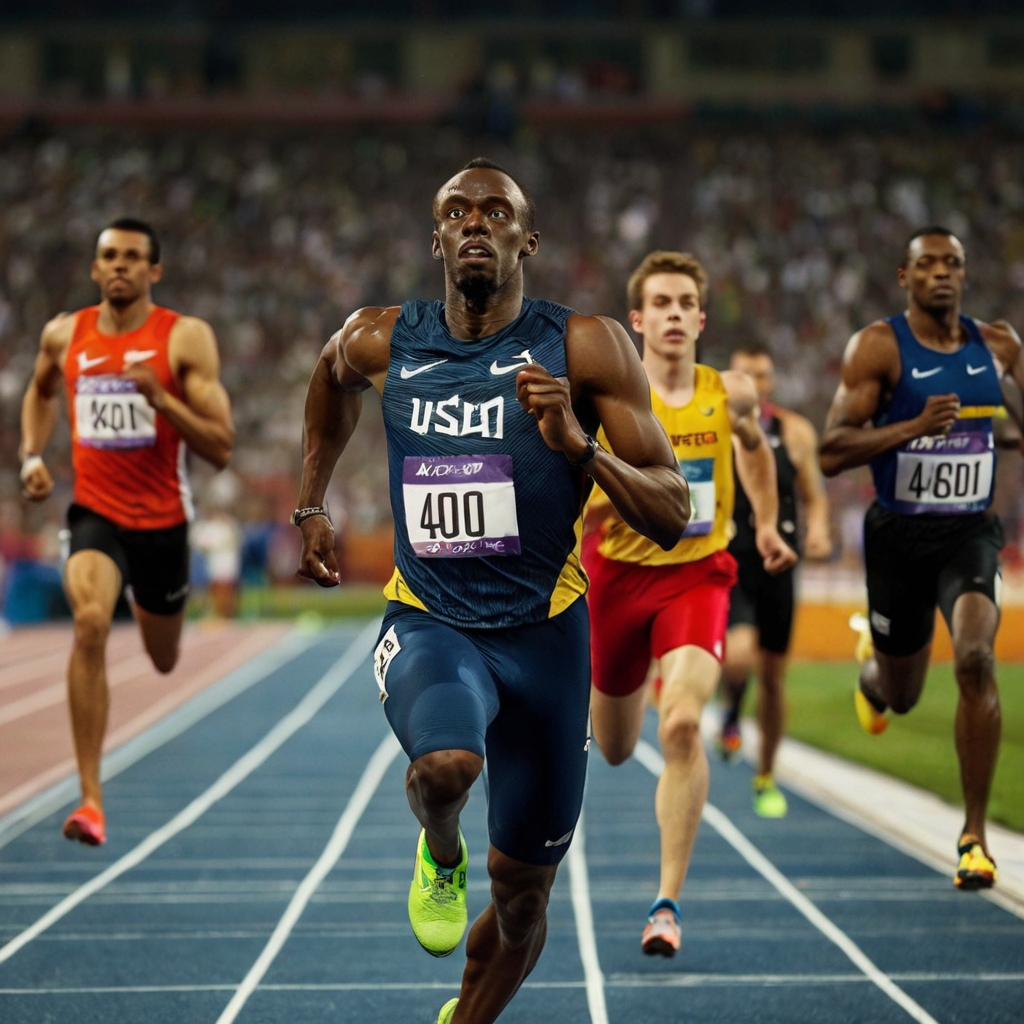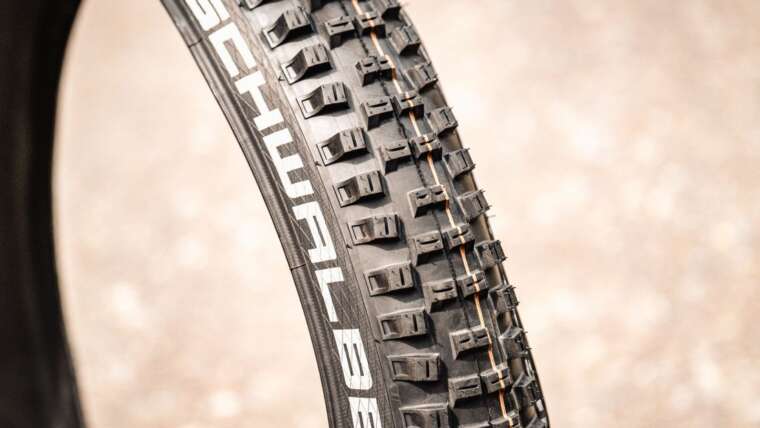Have you wondered how your 400m running time compares to others your age? The 400-meter sprint is one of track and field’s most demanding events.
The biggest improvements in your times come from proper race execution, technical refinement, and well-laid-out training programs. Don’t compare yourself to elite standards. Instead, focus on steady progress within your age group and experience level. Time trials and detailed training logs will guide your development.
You’ll succeed in the 400m when you balance speed work with endurance training and respect your body’s current limits. Your commitment to proper training and race strategy will help you achieve your goals on the track, whether you want to break 60 seconds or set age-group records.

Table of Contents
- 1 Understanding 400m Performance Benchmarks
- 2 Age-Related Performance Factors
- 3 Breaking Down Times By Experience Level
- 4 Analyzing Performance Data
- 5 Setting Realistic Goals
- 6 Here are some FAQs about the average 400m time by age:
- 6.1 What is a decent 400-meter time?
- 6.2 What is a good 400m time for a 14-year-old boy?
- 6.3 What is the average speed in 400m?
- 6.4 How long does it take a 12 year old to run 400m?
- 6.5 What is a D1 400-meter time?
- 6.6 How fast is Usain Bolt’s 400m?
- 6.7 How fast is a 50 second 400m?
- 6.8 Why is 400m so hard?
- 6.9 What is the average 13 year old boy 400m?
- 6.10 How fast is 400m in 48 seconds?
- 6.11 What is the WR 400-meter time?
- 6.12 How to run 400m in 1 minute?
- 6.13 How fast should a 14 year old run 400 meters?
- 6.14 What is a fast 400m time for a high school boy?
- 6.15 What is a normal pace for 400m?
- 6.16 What is an Olympic 400-meter time?
- 6.17 How many mph is a 1 minute 400m?
- 6.18 How should I pace myself for a 400m?
Understanding 400m Performance Benchmarks
The 400-meter dash showcases an amazing range of performance measurements at every competitive level. Wayde Van Niekerk stands at the top with his world record of 43.04 seconds, which he set at the 2016 Rio Olympics.
World records and elite times
Elite performance in the 400m shows us what humans can achieve at their absolute best. Here’s how the fastest times stack up:
- World Class: 43-44 seconds
- Elite/Collegiate Best: 45-46 seconds
- Collegiate Good: 46-48 seconds
- High School Varsity Best: 48-51 seconds
Average times by gender
Gender makes a big difference in 400m performance measurements. Recreational runners’ typical times vary between men and women:
Men (ages 18-39):
- High-Level Recreational: 1:01
- Intermediate: 1:12
- Novice: 1:28
Women (ages 18-39):
- High-Level Recreational: 1:08
- Intermediate: 1:20
- Novice: 1:37
Performance variations across age groups
Our running speed changes as we get older. The way performance shifts with age tells an interesting story. Men’s times in their 40s typically increase by 6-8 seconds compared to their peak years. Elite runners at age 60 can still clock impressive times around 53.88 seconds.
Age affects performance in predictable ways:
- Peak Performance: Runners reach their fastest times in their early to mid-20s
- Early Masters (40+): Times slow by about 1-2 seconds each year
- Later Masters (60+): Speed decreases more quickly, but runners still achieve remarkable times
- Super Masters (80+): Competitive runners maintain respectable times around 1:10-1:30
These numbers come from trained athletes. Many people would need rest breaks to complete a 400m lap. Your own potential depends on how fit you are now, your training history, and your age. Elite times might seem impossible to reach, but you’ll find more value in tracking your own progress against others in your age group and experience level.
Age-Related Performance Factors
Knowing how your body changes throughout different life stages helps you set realistic 400m goals. Age affects your running performance in various ways, and you should know what to expect at different life stages.
Physical development stages
Your running performance in the 400m evolves substantially through different developmental phases. Speed and power improve rapidly during teenage years as muscle mass increases and coordination develops. Your cardiovascular system matures extensively, which helps you maintain speed over the full lap.
Peak performance age ranges
Most runners reach their best 400m performance between their early 20s and mid-30s. The peak performance typically breaks down like this:
| Gender | Peak Start | Peak End | Optimal Recovery Period |
|---|---|---|---|
| Men | 20 years | 30 years | 24-48 hours |
| Women | 20 years | 35 years | 24-48 hours |
Your body maintains an ideal balance of speed, power, and endurance during these prime years. Recovery between training sessions reaches its optimal level, which allows for more frequent high-intensity workouts.
Natural decline factors
Several natural factors start to affect your 400m performance beyond your peak years:
- Physiological Changes:
- Gradual decrease in muscle mass and bone density
- Reduced maximum oxygen consumption
- Changes in heart rate and stroke volume
- Slower recovery between training sessions
Your technique and race strategy can help make up for these natural changes. Many masters athletes clock impressive times by focusing on refined running form and smart training approaches. Your times might gradually increase, but consistent training can substantially slow this natural decline.
Note that these age-related changes don’t follow a strict timeline. Your personal genetics, training history, and current fitness level determine how age affects your performance. This knowledge helps you adapt your training and expectations to match your body’s capabilities at each life stage.
Breaking Down Times By Experience Level
Here’s a look at what you can expect at different experience levels in the 400m sprint. This will help you understand where you stand and guide your running experience.
Simple benchmarks
New runners should focus on building proper form and simple endurance. Beginners typically clock times around 1:39 for men and 1:49 for women (ages 18-39). These times are just the start of your journey. They provide solid groundwork to improve.
Your first training should focus on:
- Building proper sprint mechanics
- Developing simple speed endurance
- Learning pace management
- Understanding race strategy fundamentals
Intermediate milestones
Your times will improve substantially as you reach the intermediate level. Men typically achieve times around 1:12, while women reach approximately 1:20. This stage brings a deeper understanding of the 400m race.
The intermediate phase features structured training and better race execution. You’ll find that you can maintain speed throughout the race better. Training now includes more specific elements, and a coach often helps refine your technique.
Advanced performance targets
Advanced level brings you closer to competitive times. High-level recreational athletes see men achieving times around 1:01, while women reach 1:08. These times show deep commitment to training and racing.
Performance Targets by Level:
| Experience Level | Men (18-39) | Women (18-39) |
|---|---|---|
| Sub-Elite | 0:53 | 0:59 |
| National Class | 0:50 | 0:56 |
| Elite | 0:47 | 0:53 |
Advanced training becomes highly specialized. World-class sprinters maintain 97% of their 200m personal best for the first half of the race. Success comes from balancing acceleration, maximal velocity, and speed endurance.
These times reflect years of dedicated training, proper technique development, and race strategy refinement. Moving through these levels requires consistent training, proper recovery, and smart race execution.
Analyzing Performance Data
A deep dive into performance data shows the sort of thing I love – patterns that help athletes understand their 400m potential better. The latest research and competition statistics tell an interesting story about how different factors affect running times.
Statistical averages by age group
Age substantially affects expected performance times. Athletes reach their peak performance between 20-30 years for men and 20-35 years for women. These optimal years bring the highest levels of recovery ability and power output. The performance curve reveals these patterns:
| Age Range | Performance Impact |
|---|---|
| 15-20 | Rapid improvement |
| 20-35 | Peak maintenance |
| 35-40 | Gradual decline |
| 40+ | 1-2 sec/year drop |
Gender-specific trends
Research into 400m performance differences between genders reveals some fascinating patterns. The performance gap between men and women changes throughout different segments of the race:
- First 100m: 5.6% difference
- Middle 200m: 9.6% difference
- Final 100m: 14.2% difference
This widening gap throughout the race demonstrates how energy systems and muscular endurance play vital roles in performance potential.
Competition level comparisons
Competition levels have a direct effect on expected performance times. Recent analysis of international competitions shows varying performance gaps between men and women based on competitive ranking:
The gap becomes more noticeable at different competitive levels:
- Elite Level: 8.6% gap (sprint distances)
- National Level: 10-11% gap
- Recreational Level: 12-14% gap
Environmental conditions can make a big difference in race times. Data shows that spikes and blocks can shave up to 1-2 seconds off your time compared to regular trainers. Race day conditions typically result in times 2-3 seconds faster than practice runs, thanks to adrenaline and proper rest.
Race experience plays a vital role in optimizing performance. Youth championship data shows experienced runners perform 3-4 seconds better than those with similar physical capabilities but less race experience. This proves the value of both physical training and developing race strategy with mental preparation.
Note that these statistics serve as general measures, but they shouldn’t set limits on your goals. Many athletes have pushed past these averages through dedicated training and smart race execution. Your personal progress matters most, so use these data points as guidelines rather than absolute limits.
Setting Realistic Goals
Your 400m performance goals need a smart plan that looks at several factors. Success on the track comes from setting targets that push you while staying within reach of your current abilities.
Age-appropriate targets
Your age plays a big role in setting the right goals. A new runner can see up to an 8% improvement in one season. More experienced runners should look for a 5% improvement rate.
Here are target ranges by age:
- Youth (13-17): Learn proper technique and work on steady time improvements
- Prime Years (18-35): Push hard based on your fitness level
- Masters (35+): Match your targets with your body’s natural changes
Note that you can control your fitness level, unlike age and genetics. This makes it vital to set goals based on what you can do now rather than comparing yourself to elite athletes.
Progress tracking methods
The best athletes track their progress using different tools. Here’s a complete tracking system that works:
Time Trial Benchmarks:
| Distance | Frequency | Purpose |
|---|---|---|
| 320m Time Trial | Monthly | Predict 400m potential (add 12 seconds) |
| 200m Speed Check | Bi-weekly | Assess pure speed development |
| 300m Assessment | Monthly | Review special endurance |
Your training log must show:
- Split times for each 100m segment
- Recovery rates between intervals
- Technical efficiency ratings
- Strength training progression
Performance improvement rates
Knowing what improvements you can expect helps keep you motivated. Your potential varies with experience:
Novice Runners:
- First season: 6-8% improvement possible
- Learn proper technique
- Big gains through simple conditioning
Intermediate Athletes:
- Season gains: 3-5%
- Better results through focused training
- Technical fixes drop times
Advanced Performers:
- Yearly gains: 1-3%
- Progress through planned training cycles
- Keep peak performance steady
Set process goals that help you hit your targets. Don’t just say “run faster.” Pick specific goals like cutting 0.5 seconds from your first 200m split or keeping good form through the final curve.
Your years of experience shape your target setting. Athletes with 2-3 years should chase peak goals. Newer athletes need achievable targets that build confidence.
These benchmarks work well:
- Short-term: Fix specific parts of your race plan
- Medium-term: Hit consistent split times
- Long-term: Meet age-graded standards
The 400m needs both speed and special endurance. Your goals should cover both areas with targets for 200m sprints and 300m trials.
Write down your goals and check them often. This keeps you focused during training and lets you adjust as needed throughout the season.
Knowing your potential 400m running time helps you set realistic expectations and meaningful goals for your track trip. World-class athletes run impressive times under 44 seconds. Your personal targets should line up with your age, experience level, and training background.
Your performance potential has a natural arc. It peaks in your 20s and early 30s before it gradually declines. Smart training strategies and regular practice can help you maintain fast times well into your masters years. Your improvement rates change by a lot based on your experience. Beginners might see 6-8% gains in their first season. Advanced runners typically achieve 1-3% improvements each year.



